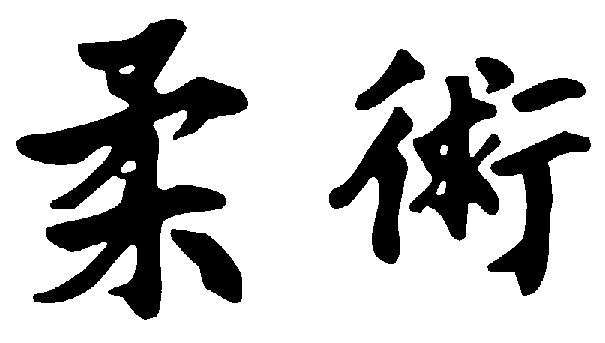
ADVERTISING: 086 219 98 71
MAGAZIN FOR ACTIVE PEOPLE
PROMOTED MOVIES







RED BULL GIVES YOU A WINGS CHECK THE NEWEST REDBULL CHALLENG !





JU-JUTSU

Japanese jujutsu systems typically place more emphasis on throwing, immobilizing and pinning, joint-locking, choking, and strangling techniques as compared with other martial arts systems such as karate. Atemi-waza (striking techniques) were seen as less important in most older Japanese systems, since samurai body armor protected against many striking techniques. The Chinese quanfa/ch'uan-fa (kenpo or kung fu) systems focus on punching, striking, and kicking more than jujutsu.
The Japanese systems of hakuda, kenpo, and shubaku display some degree of Chinese influence in their emphasis on striking techniques. In comparison, systems that derive more directly from Japanese sources show less preference for such techniques. However, a few jujutsu schools likely have some Chinese influence in their development. Jujutsu ryu vary widely in their techniques, and many do include significant emphasis on striking techniques, though in some styles only as set-ups for their grappling techniques.
In jujutsu, practitioners train in the use of many potentially fatal moves. However, because students mostly train in a non-competitive environment, risk is minimized. Students are taught break falling skills to allow them to safely practice otherwise dangerous throws.
In jujutsu, there are five main sectors ("arts") of training. The first, the Art of Blocking, is used to defend against attacks. The second, the Art of the Fulcrum Throw, is employed in modern judo. The third, the Art of the Non-fulcrum Throw is employed through throws that involve little or no contact with the opponent. The fourth, the Art of Escaping (Hakko-Dori), is very crucial in many styles of Jujutsu. The fifth is the Art of Striking (Atemi-Waza).
The word Jujutsu can be broken down into two parts. "Ju" is a concept. The idea behind this meaning of Ju is "to be gentle", "to give way", "to yield", "to blend", "to move out of harm's way". "Jutsu" is the principle or "the action" part of Ju-Jutsu. In Japanese this word means science or art.
Jujutsu (English pronunciation: /dʒuˈdʒʌtsu/; Japanese: 柔術, jūjutsu , is a Japanese martial art and a method of close combat for defeating an armed and armored opponent in which one uses no weapon or only a short weapon. The word jujutsu is often spelled as jujitsu, ju-jitsu or jiu-jitsu. This is due to the difficulties in translating the Japanese writing system, which uses ideograms, to languages which use an alphabet. When the martial art spread to foreign countries the word jujutsu was adopted to describe it, although in many cases the romanization wasn't known at the time of adoption so it was written down phonetically.
"Jū" can be translated to mean "gentle, supple, flexible, pliable, or yielding." "Jutsu" can be translated to mean "art" or "technique" and represents manipulating the opponent's force against himself rather than confronting it with one's own force.Jujutsu developed among the samurai of feudal Japan as a method for defeating an armed and armored opponent in which one uses no weapon, or only a short weapon. Because striking against an armored opponent proved ineffective, practitioners learned that the most efficient methods for neutralizing an enemy took the form of pins, joint locks, and throws. These techniques were developed around the principle of using an attacker's energy against him, rather than directly opposing it.
There are many variations of the art, which leads to a diversity of approaches. Jujutsu schools (ryū) may utilize all forms of grappling techniques to some degree (i.e. throwing, trapping, joint locks, holds, gouging, biting, disengagements, striking, and kicking). In addition to jujutsu, many schools teach the use of weapons.
Today, jujutsu is practiced in both traditional and modern sport forms. Derived sport forms include the Olympic sport and martial art of judo, which was developed by Kanō Jigorō in the late 19th century from several traditional styles of jujutsu, and Brazilian Jiu-Jitsu, which was in turn derived from earlier (pre–World War II) versions of Kodokan judo.
Japanese culture and religion have become intertwined into the martial arts. Buddhism, Shinto, Taoism and Confucian philosophy co-exist in Japan, and people generally mix and match to suit. This reflects the variety of outlook one finds in the different schools.
Jujutsu expresses the philosophy of yielding to an opponent's force rather than trying to oppose force with force. Manipulating an opponent's attack using his force and direction allows jujutsuka to control the balance of their opponent and hence prevent the opponent from resisting the counter attack.
JU-JUTSU LOCATION IN IRELAND
CLICK ON THE MAP
JU-JUTSU SEMINARS AND EVENTS
IRELAND & ABROAD















PROMOTED ADS

